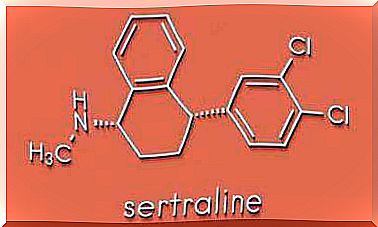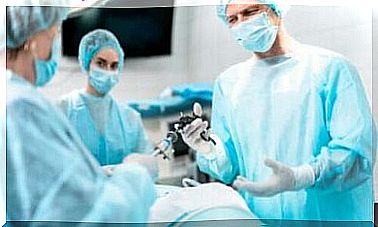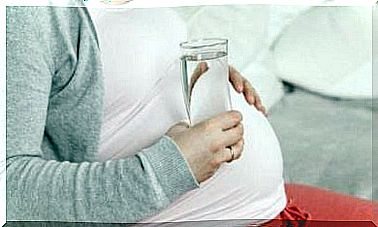8 Care After Tooth Extraction
Care after tooth extraction is decisive in promoting the healing process. In addition, they considerably reduce the risk of complications. What should you keep in mind?
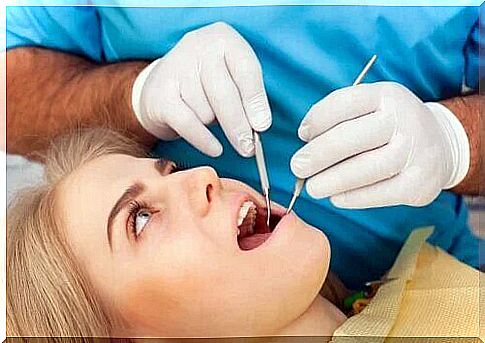
Surgical procedures in which the dentist removes a tooth from where it is lodged have certain indications. Care after tooth extraction is necessary for the treated area to heal and recover.
The operation is performed under local anesthesia, so as not to feel pain. In very specific cases, it is necessary to completely put the patient to sleep with general anesthesia. The professional first detaches the tooth from the supporting gum tissue.
Then, with dental lifters and pliers, the dentist will make movements to loosen the tooth and remove it from the socket that houses it. More complex cases require the use of other instruments to cut gum tissue, remove bone, or break teeth into smaller fragments.
When the tooth is outside the mouth, a blood clot forms in the space it occupied, responsible for healing wounds. Its care and conservation are vital for good recovery. In this article, we will explain to you why it is necessary to take care of yourself after tooth extraction and how to do it.
When is it necessary to extract a tooth?
Tooth extraction is a fairly common procedure in adults. As today’s dentistry attempts to keep teeth in the mouth, there are times when tooth extraction is inevitable. These are detailed below:
- Tooth infection : When not fought with antibiotics, it occurs repeatedly, cannot be treated with root canals, and can spread to other areas of the body.
- Risk of infection : patients with weakened immune systems and whose tooth may present a risk to their health.
- Caries : when the disease is very advanced and there is a strong destruction of the tooth. These are cases that cannot be fixed with fixes or overlays.
- Tooth fracture or traumatic injury : Injuries to teeth caused by blows may require the removal of teeth or their fragments.
- Advanced periodontitis : The loss of the tissues that support the teeth can lead to mobility of the teeth and the need to extract them.
- Tooth overcrowding : a case in which the teeth overlap and are too numerous. The extraction is completed by orthodontics.
- For orthodontic reasons : as part of orthodontic treatment, it may be necessary to remove some teeth to create space.
- Disorders in wisdom teeth : When these teeth have no space to erupt, they cause pain, get infected or generate other problems in the mouth, it is necessary to extract them.
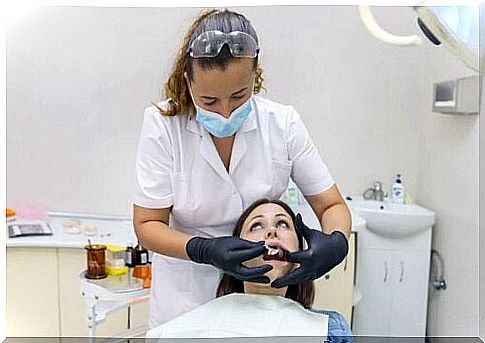
8 tips for taking care of yourself after tooth extraction
After a tooth extraction, postoperative care is very important so that the recovery is the least inconvenient for the patient. Usually, it will take 7-10 days for the mouth to heal the wound, depending on the type and location of the surgery.
Pain and even swelling with bruising can occur during the first 3 days. Taking care of the blood clot that forms inside the space occupied by the extracted tooth is the key to good healing.
Following the dentist’s instructions is of great importance to avoid inconvenience and have a successful recovery. What to consider Apply the following tips.
1. Apply pressure with gauze
The dentist, after surgery, will place a folded gauze and bite you. This pressure must be maintained for the first 30 to 60 minutes (the professional will establish it according to each case).
Its goal is to stop bleeding and promote blood clots. As we have already mentioned, the plug of blood in the space left by the tooth is necessary for the closure of the wound.
The gauze should not be left in place for a long time, as the clot may adhere to it. This way, once removed, the location would be empty, making healing difficult.
When the indicated time elapses, the gauze is removed and nothing else is put on. In case of excessive bleeding that does not stop over time, it helps to put on gauze and apply pressure, but you should see a professional.
2. Apply cold to the area
Cold helps reduce inflammation, prevent bruising, and soothe pain. For this reason, applying ice packs to the face near the surgery area is very helpful.
The cold should be placed immediately after surgery, at intervals not exceeding 10 minutes. Then rest at the same time and repeat. Leaving ice on the skin for a long time damages the tissue.
In addition, it is important to avoid the proximity of heat sources, such as the stove, heating and kitchens. It is also not recommended to sunbathe or go out in hot weather.
3. Eat soft and cold foods
After tooth extraction, it is advisable to avoid eating very hot foods. To promote recovery and reduce stress in the area, it is best to consume products that are soft, crushed and easy to chew.
A balanced diet, which contains pasta, eggs, fish, dairy products and cooked vegetables, will provide the necessary nutrients, in addition to having the ideal consistency. Zinc in green vegetables and vitamin C in citrus fruits help with healing.
It is important to avoid consuming these foods with items such as straws. Instead, use spoons and take gentle sips. The hardest foods can be incorporated gradually, but it is advisable to continue with this treatment for a week.
4. Rest and don’t exercise
Limiting physical activity and effort after tooth extraction helps prevent complications after surgery. It is advisable not to speak too much or to move your mouth excessively.
It is also necessary to rest and relax with your head elevated and in a more seated position. The horizontal position promotes pain and bleeding due to the accumulation of blood. Placing pillows and cushions on the bed is useful for sleeping.
5. Take the medicine indicated by the professional
After tooth extraction and when the effect of the anesthesia wears off, symptoms such as pain and inflammation appear. For this reason, the dentist usually prescribes anti-inflammatory drugs in order to reduce the discomfort.
If the extraction was done for the presence of an infection, the person may already be taking antibiotics. Otherwise, they will likely be prescribed after extraction. They should be consumed at the appropriate time, without skipping doses, until the end of treatment on the days indicated.
On the other hand, the patient must tell the professional if he is consuming other types of medication. This is to determine if a suspension or replacement is needed before surgery.
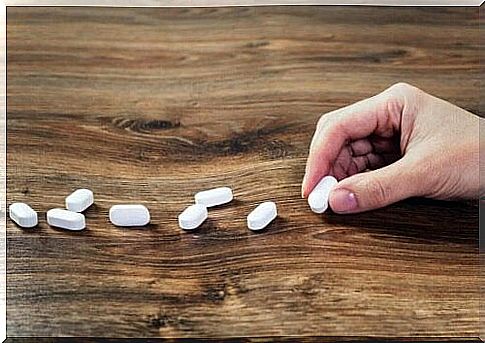
6. Do not suck or rinse your mouth
Preventing the blood clot that forms in the socket from spreading is vital for healing. If it comes out, you run the risk of getting an infection or dry socket.
Therefore, it is best to avoid mouthwashing, gargling, rustling, or spitting up forcefully. In addition, suction movements should be limited, as they increase the risk of loosening the blood plug.
7. No smoking
The use of cigarettes after tooth extraction is harmful and counterproductive. As we have already mentioned, the suction movement can cause the clot to dislodge.
The heat also promotes bleeding and the risk of infection. And, as if that were not enough, tobacco finally predisposes to infection due to impaired circulation in the area and the presence of toxins.
8. Keep your mouth clean
It is necessary to keep the oral cavity clean after tooth extraction to avoid infection. You should continue to brush and floss your teeth as usual, with gentler movements, but avoiding the extraction area.
Brushing the tongue is also helpful in reducing odor and taste generated by the healing process. It is important to make sure that food debris does not accumulate in the wound.
After a few days, you can finally do gentle rinses with lukewarm salt water or an alcohol-free mouthwash. It is convenient not to spit them out, but to let them drop the liquids on their own.
Why is it important to take care of yourself after tooth extraction?
Providing care after tooth extraction is therefore essential to avoid complications. It takes 7-10 days for the wound to close. Then, in depth, a new bone will be generated to replace the space left.
Thus, compliance with the professional’s instructions reduces postoperative risks. These include the following:
- Bleeding : The wound continues to bleed profusely and without stopping for several hours after extraction.
- Infection : The extraction area smells, hurts, throbs, swells and drains. The face and neck may appear swollen, hot, and sore.
- Dry socket : due to clot detachment, the site where the tooth had remained empty, leaving the bone exposed. It is a very painful problem. The dentist must generate more bleeding and place dressings to begin another healing process.
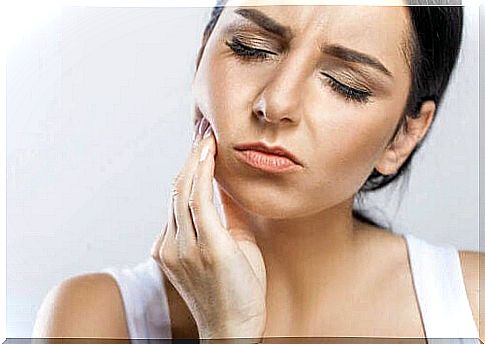
When to see the dentist after tooth extraction?
It is possible that despite adherence to all care after tooth extraction, some of the above complications may occur. If this is the case, it is best to go urgently to the nearest dentist or hospital.
A healthcare practitioner should be consulted if the following symptoms appear :
- Pain and discomfort that does not go away 2-3 days after extraction.
- Discomfort or pain radiating to other parts of the body (ear, head or neck).
- Swelling or swelling of the face or neck.
- Presence of pus in the mouth and in the wound.
- Excessive bleeding that does not stop when you bite the gauze.
- High fever with general malaise, nausea or vomiting.
- Tingling, cramping, or numbness in the area after the anesthesia wears off.
- Sensation of pressure under the tongue.
- Difficulty breathing, swallowing, or speaking.
- Cough and chest pain.
If after the extraction everything goes well, it is also advisable to return to the dentist to check the healing and discuss the possibilities of replacing the lost tooth. The professional will be the one who will advise the best on the alternatives to rehabilitate the mouth and regain function and aesthetics.
Smile again
Tooth extraction can generate fear and anxiety in the patient who needs it, as it is a surgical act that carries risks and complications. Losing a tooth also involves thinking about a way to replace it.
Therefore, after the extraction, you should speak with the dentist about the possibilities of fabricating a prosthesis, fixed bridge or implant. In addition, it is essential to apply the treatment after the extraction so that the recovery is the least traumatic possible.

